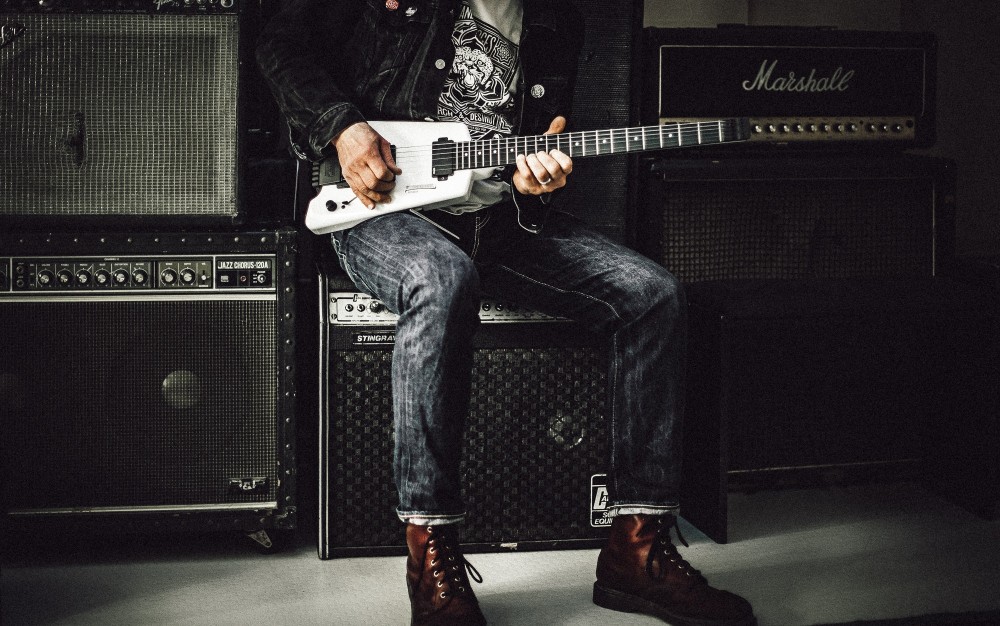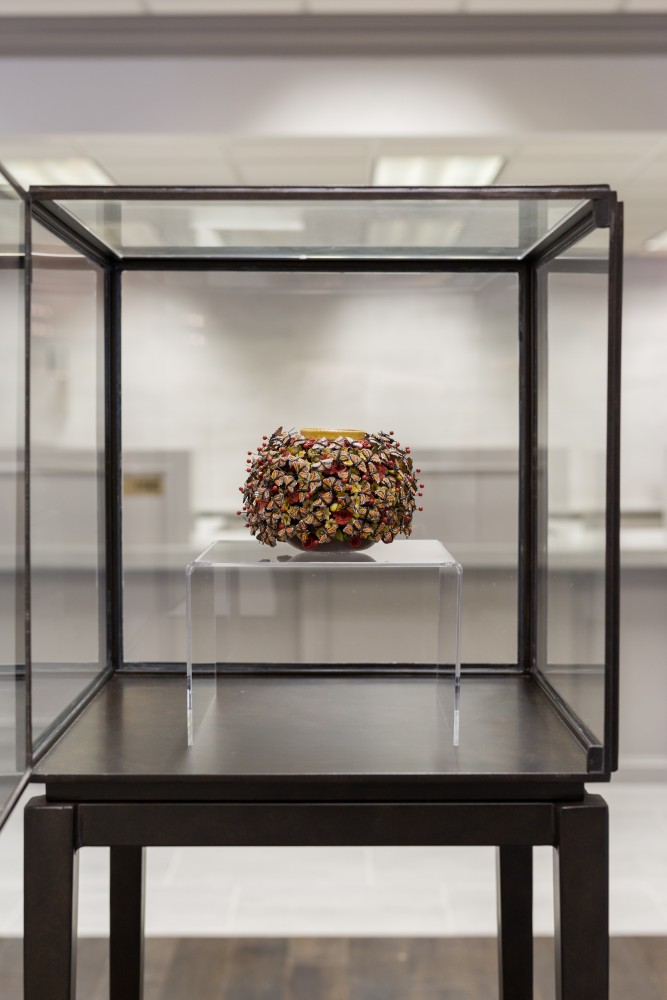Kaukauna’s art community is on fire and here’s why
When you imagine the arts community in the Fox Cities, your mind probably goes to places like the Fox Cities Performing Arts Center, maybe the Trout Museum of Art, and definitely Mile of Music. Because many of these popular art institutions are located in established art communities like Appleton, smaller places, like Kaukauna, tend to be overlooked.
 Kaukauna, nicknamed “The Electric City” after its original 1885 hydroelectric plant, is often associated with its industry before its arts. But every vibrant community starts with a few talented artists and social entrepreneurs with big dreams, and over the past few years, Kaukauna has started to develop into a prominent arts community that redefines what an Electric City “experience” means.
Kaukauna, nicknamed “The Electric City” after its original 1885 hydroelectric plant, is often associated with its industry before its arts. But every vibrant community starts with a few talented artists and social entrepreneurs with big dreams, and over the past few years, Kaukauna has started to develop into a prominent arts community that redefines what an Electric City “experience” means.
“Networks of community are developing, and they’re developing through a lot of different patchwork efforts,” says John Brogan, CEO of the Bank of Kaukauna and active supporter of the arts in Kaukauna. “People are starting to discover that this place really is a vibrant community and a great place to live.”
Perhaps the most well-known effort in the Kaukauna area so far comes from Jason Lipski, program director of Appleton Rock school, who brought the Electric City Experience music festival to Kaukauna in 2015.
“With 60 acts, we kind of have everyone in town playing at this one,” Lipski says. Since its debut in June 2015, Lipski has transformed the event from a somewhat underground experience, with performances taking place in about 12 downtown Kaukauna taverns, to a large-scale outdoor festival bringing more attention to the area.
“It has been kind of growing each year,” Lipski says. “[But] all those bars in Kaukauna are pretty small, so it doesn’t take a whole lot of people to get the place packed. Last year was our first major step in growing our outdoor festival, and it was a big hit.”
By Lipski’s estimate, turnout increased to about 10,000 people for the one-day event, hosting venues in taverns and outdoor venues. This year’s event is set to be entirely outdoors, and Lipski plans to extend the fun across five days between June 6 and 10.
“Saturday is our big day; we’ll have nine outdoor stages,” Lipski says. “And we’ve got more things going on. This year there’s a carnival and fireworks [on Thursday]. And the Northeast Wisconsin Arts Association is hosting an art market. There’s something for everybody.”
Lipski says the event is important because it gives the Kaukauna community options in the arts scene right in town.
“Kaukauna’s actually a decent-sized town, but it gets overlooked at a lot of things,” Lipski says. “You can never have too much arts and culture, and it has been something that’s been on the upswing over the years.”
While annual arts events give the community something to look forward to every year, Greg VandeHey, visual artist and owner of the Vaudette, an in-development music performance venue and art gallery, hopes to help transform Kaukauna into a place that has a more year-round, ongoing arts community.
“I know lots of creative people here, but there just isn’t a hub yet,” Vandehey says. “The Electric City Experience, I love that experience, it’s a steady thing you’re doing once a year, but that’s just one weekend [a year].”
VandeHey grew up in Kaukauna, but moved to New York City right after college, teaching art education, working for the Departments of Sanitation and Cultural affairs, and getting involved in nonprofit initiatives such as Materials for the Arts.
“We would get Google … and Louis Vuitton and Marc Jacobs to donate to a giant warehouse of raw materials … all sorts of things that we would turn into art projects,” VandeHey says, “but it was a store that catered to teachers and not-for-profit arts groups that could go to this giant warehouse to shop for free.”
After 17 years of being successful in one of the world’s largest metropolitan arts areas, he returned to Kaukauna, deciding “a lifestyle that’s not revolved around finding parking” would be better for his family, and he realized a viable opportunity as an artist not available in New York City.
“Because Kaukauna is kind of undervalued in the Valley, so the same kind of housing and commercial spaces are undervalued here compared to other cities for some reason,” VandeHey says. “But to me, the city has given artists like myself the opportunity to buy a property for very cheap to hopefully bring some life and culture down here.”
That’s what led VandeHey to the historic Second Street Vaudette Theatre. From 1912 to 1937, the original Vaudette was a silent movie theater and a performance venue for vaudeville shows. For VandeHey, the classic vaudeville venue, which he says is “so old no one really remembers it,” was the perfect place to cultivate Kaukauna’s art culture with his own community-focused events.
“I was really inspired by this place in particular,” he says.
VandeHey is renovating the venue to be up-to-code as a large-audience commercial space and hopes the Vaudette can officially open by the end of this summer. Once fully open, he hopes the Vaudette will be a place for local singer/songwriters, theater groups, performers of all types and visual artists to showcase their works year-round.
“I really want to be a space that people think about when they want to do a performance,” he says. “Once people find out about it, I’ll probably be very busy because there’s such a need for a local performance space.”
VandeHey says the Vaudette is able to host smaller-scale events of 10-20 people, so every Monday evening, he hosts improvisational music concerts. A few audience members show up to watch, but most join the performance.
“I just kind of spend money to have people come in and jam right now, but I know I’m just kind of feeding that fire. One guy said to me, ‘I came from Manawa.’ I don’t even know what Manawa is. I’m like, ‘Awesome.’ Word is spreading … about our community.”
But the Vaudette isn’t the only year-round arts business in town, or the first. Lee Mothes, owner of the Oceans and Dreams studio and art gallery, has been active in Kaukauna since 1987. Growing up in California and earning an art degree at Western Oregon University, Mothes brings a unique talent and specialization in Pacific Ocean landscape paintings not often seen in Kaukauna or even the Midwest.
“I do this is to keep people aware that it’s out there and [that] it’s a beautiful force of nature and [to] inspire those who have never been to the coast to take a trip one day,” Mothes says. “The response has always been good here.”
The gallery is located on the second floor of Kaukauna Coffee & Tea, a cafe owned by Ali Zimmerman, his daughter. According to Mothes, having the coffee shop and gallery in close proximity helps both establishments and gives the community more options.
“People can visit there and then come upstairs with their coffee and just take a look,” Mothes says. “If you happen to be out in the morning, go out and have a cup of coffee, take a walk at the nature center, but take in some artwork too, so it’s another fun thing to choose from.”
Brogan thinks businesses have an important role to play in the development of a community through its arts. In addition to supporting local art and community efforts, the bank hosts a “museum” of its own, with a rotation of 25-30 pieces from Kaukauna artists, such as painters Dan De Koch and Margaret E. Brewster, as well as up-and-coming pieces from the Midwest and beyond. This, he says, gets the word out about local and national artists while making the businesses we go to every day exciting to visit.
“If we get to live in spaces that make our spirits soar, than we’re going to do amazing things,” Brogan says. “We’ve got this space, we can put cool art up and people can … experience it and ask questions. There’s something to do, there’s life in the buildings [and] there’s a reason to go into your bank.”

According to Brogan, people tend to see cities as fixed and static, where the Appletons and Neenahs stay big and the Kaukaunas stay small, but he says communities can develop more than people realize.
“I think it’s so easy to get trapped into a preconceived notion of what a place is,” Brogan says. “If you look around the country, [communities transform] over and over. The Pilsen neighborhood in Chicago, it was a very poor, working-class neighborhood [until] somebody came in and bought up some of the main real estate and [leased] the space cost effectively to artists.”
Rather, he says that communities flourish when talented artists take advantage of low costs of living, and then that creates a ripple effect.
“Artists come in and start doing things, opening little pop-up shops and things, and all of the sudden people get excited, and all of the sudden people bring in a coffee shop, and there’s restaurants, and pretty soon you have those businesses and you start to form a community,” he says.
With a combination of artist talent and community support, Brogan believes Kaukauna will be a place known for its arts.
“All of these places are changing, and we’re becoming a big city,” Brogan says. “If everyone starts caring about the community and investing a little more about what makes a community vibrant and interesting, it starts dominoing pretty quickly right away.”
